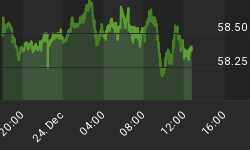The United States has the largest trade deficit in the world—but it’s not the oft-tweeted $800 billion.
As a trade war unfolds over U.S. plans to slap hefty tariffs on imports of steel and aluminum, and countries vow to retaliate, the justification is that allies and enemies alike have been taking advantage of the U.S.
The figure being bandied about on Twitter is $800 billion—the alleged size of the U.S. trade deficit, according to Trump.

(Click to enlarge)
But facts get in the way.
The real figures come from the Bureau of Economic Analysis and the U.S. Census Bureau.
According to official figures, the total U.S. trade deficit in 2017 was $566 billion, which includes $2.895 trillion in imported goods and services against $2,329 trillion in exported goods and services.
By way of comparison, the deficit in 2013 was $478 billion, while the record was $762 billion in 2006.
Looking at just January this year, the Census Bureau notes that petroleum imports for the month were the highest, at $19 billion, since January 2015, when they were $19.7 billion. Likewise, imports this January of industrial supplies and materials were also higher than they have been at any time since December 2014. January 2018 recorded $47.3 billion in imports of industrial supplies and materials, compared to $51.8 billion in December 2014.

(Click to enlarge)
Exports of services also increased in January 2018 to $66.7 billion, gaining $0.3 billion, with one-third of that boosted by the use of intellectual property.
In order to claim an $800-billion trade deficit, one has to entirely ignore the massive services industry.
The services sector is huge, and it’s only getting bigger. Growth is continuing at a solid pace, according to the Wall Street Journal.
Trade in services is a booming business, and it’s offsetting a deficit in goods. Last year, it offset the deficit in goods by $244 billion for things like transportation, computer and financial services, royalties and military and government contracts, according to the Associated Press.
This sector has expanded for 97 straight months, and its momentum is “powering the bulk of the U.S. economy, says WSJ.
As the Trump administration prepares this week, tentatively, to implement a proposed 25-percent tariff on imported steel and a 10-percent tariff on imported aluminum, this is what official trade data from allies and enemies tells us:
Official European Union data for 2016 shows that the U.S. imported 5 billion euros ($5.55 billion at the average exchange rate of the time) of European steel, while the U.S. exported 1 billion euros in steel to the EU.
For aluminum, the U.S. imported roughly $500 million from Europe in 2016. It’s a drop in the bucket of overall US-EU trade, which hit 600 billion euros that same year.
Based on 2016 figures from the official U.S. agencies, the U.S. trade deficit with the EU was at $146.7 billion, and it’s not about steel. Related: Trade War Fears Rattle Wall Street After Cohn Exit
So what about Mexico? Indeed, the U.S. is the biggest importer of Mexican goods. In 2017, Mexico had a $71-billion trade surplus with the U.S., up from $64 billion the year before.
Then we have the U.S. ally to the north. While Trump has complained about the trade deficit with Canada, that ignores the services industry, which actually turns that deficit into a surplus.
The U.S. boasted a $12.5-billion trade surplus with Canada in 2016. How? While there was a $12.1-billion U.S. deficit in goods exported, there was a $24.6-billion surplus in services exported to Canada.
While China has been the real stated target of a trade war, most of the steel and aluminum pain would be meted out to allies.
Republican Senator Lindsay Graham told media that the tariffs would be a major victory for China—the chief source of global oversupply of both steel and aluminum.
Even so, the facts are that we do not have a $500-billion trade deficit with China; rather, we have a $375-billion deficit, as of 2017.
The overall sentiment, including from Republicans in the White House, is that a trade war could be economically disastrous, and it will hit our allies rather than our enemies.
Trade imbalance with China has been a problem for years. But according to the U.S. Department of Commerce, the worst it’s even been since 2008 was Trump’s first year in office, when the deficit with China grew 8 percent.
Key reasons for increases in trade deficits are a strengthening dollar and economic growth. Between 2014 and 2016, the dollar gained 28 percent, making imports cheaper and exports pricier.
The U.S. economy is stronger than ever, and it’s this that leads to more imports. An economic fact that the administration can boast is exactly this: Economic growth rose to 2.3 percent last year, up from 1.5 percent in 2016, while unemployment is at a 17-year low.
By Charles Benavidez for Safehaven.com
More Top Reads From Safehaven.com:

















